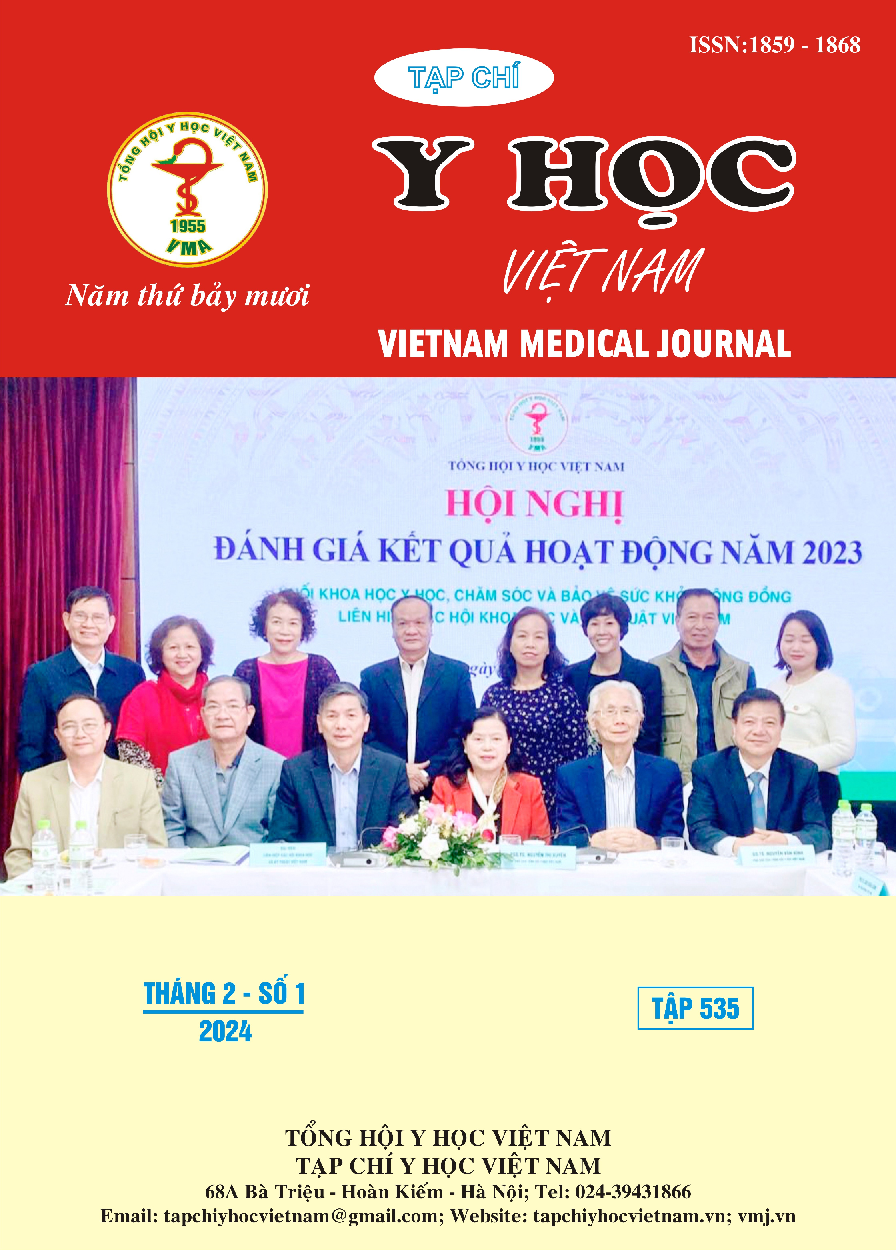RELATIONSHIP BETWEEN COMPUTED TOMOGRAPHY CHARACTERISTICS AND EGFR MUTATION IN PATIENDS WITH LUNG ADENOCARCINOMA
Main Article Content
Abstract
Purpose: The aim of this study was to investigate the relationship between Computed tomography (CT) features and EGFR mutation in patients with adenocarcinoma of the lung. Material and Methods: One hundred and thirty eight lung adenocarcinoma patients who underwent surgery or core biopsy were retrospectively included in this study. Examination of EGFR gene mutation was performed on all tumor samples. The 138 recruited lung adenocarcinoma patients were divided into groups according to EGFR mutation status: patients with mutations in exons 18–21 (effective mutated, n = 68) and non‐mutated (n = 70). The clinical characteristics and lung CT imaging features of the two groups were recorded and compared. Univariate and logistic regression analysis were performed to identify the independent risk factors relevant to effective EGFR gene mutation. Results: The independent risk factors relevant to effective EGFR mutation were evaluated by logistic regression test. The results indicated that lung CT features of semi‐solid lesion density (OR 3.282), Air bronchogram (OR 5.041), Halo sign (OR 3.073) and pleural indentation sign (OR 3.357) were independent risk factors relevant to EGFR mutation. Conclusion: The use of CT features for patients may allow analyses of tumours and more accurately predict patient populations who will benefit from therapies targeting treatment.
Article Details
References
2. Imai H., Kaira K., và Minato K. (2017). Clinical significance of post‐progression survival in lung cancer. Thorac Cancer, 8(5), 379–386.
3. Schwab R., Peták I., Pintér F. và cộng sự. (2005). [Epidermal growth factor receptor (EGFR): therapeutic target in the treatment of lung adenocarcinoma]. Orv Hetil, 146(46), 2335–2342.
4. Morin-Ben Abdallah S. và Hirsh V. (2017). Epidermal Growth Factor Receptor Tyrosine Kinase Inhibitors in Treatment of Metastatic Non-Small Cell Lung Cancer, with a Focus on Afatinib. Front Oncol, 7, 97.
5. Patel H.M., Rane R., Thapliyal N. và cộng sự. (2015). Epidermal growth factor receptor (EGFR) tyrosine kinase inhibitors from the natural origin: a recent perspective. Anticancer Agents Med Chem, 15(8), 988–1011.
6. Liu Y., Kim J., Qu F. và cộng sự. (2016). CT Features Associated with Epidermal Growth Factor Receptor Mutation Status in Patients with Lung Adenocarcinoma. Radiology, 280(1), 271–280.
7. Maemondo M., Inoue A., Kobayashi K. và cộng sự. (2010). Gefitinib or Chemotherapy for Non–Small-Cell Lung Cancer with Mutated EGFR. New England Journal of Medicine, 362(25), 2380–2388.
8. Han X., Fan J., Li Y. và cộng sự. (2021). Value of CT features for predicting EGFR mutations and ALK positivity in patients with lung adenocarcinoma. Sci Rep, 11(1), 5679.
9. Comparative analysis of clinicoradiologic characteristics of lung adenocarcinomas with ALK rearrangements or EGFR mutations
10. Routine EGFR Molecular Analysis in Non-Small-Cell Lung Cancer Patients is Feasible: Exons 18–21 Sequencing Results of 753 Patients and Subsequent Clinical Outcomes


